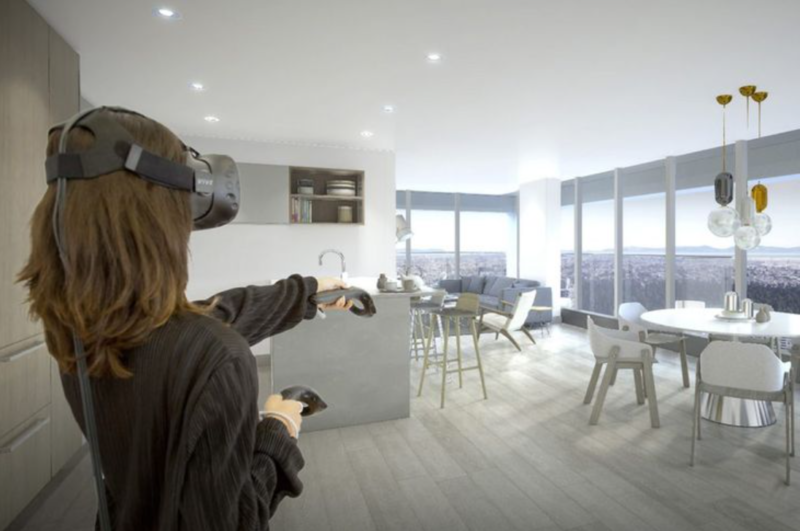The advent of Virtual Reality (VR) has revolutionized numerous industries, and home design is no exception. This immersive technology has transformed the way architects, designers, and homeowners visualize and interact with living spaces. By providing a realistic and interactive experience, VR Home Design is reshaping the home design process from conceptualization to execution.
The Evolution of Home Design
Traditionally, home design has relied heavily on two-dimensional plans, sketches, and physical models. While these methods have served the industry well, they come with limitations. Two-dimensional drawings can be difficult to interpret, and physical models are time-consuming and costly to produce. These traditional methods often lead to misunderstandings and miscommunications between designers and clients, resulting in costly revisions and delays.
The introduction of Computer-Aided Design (CAD) software marked a significant leap forward, allowing for more precise and detailed designs. However, even with advanced 3D modeling, it can be challenging for clients to fully grasp the scale and feel of a space. This is where Virtual Reality in home design steps in, offering a more immersive and intuitive way to experience home designs.
Immersive Visualization
One of the most significant advantages of VR in home design is its ability to provide immersive visualization. Using VR headsets, clients can step into a fully realized virtual model of their future home. This experience allows them to walk through rooms, explore different layouts, and get a true sense of the space. Unlike traditional renderings, VR offers a 360-degree view, making it easier to understand proportions, spatial relationships, and design elements.
For example, a client considering an open-plan kitchen can don a VR headset and experience how the kitchen flows into the living area. They can assess sightlines, natural light, and even the placement of furniture. This level of immersion helps clients make more informed decisions, reducing the likelihood of costly changes later in the project.
Design Experimentation
VR also empowers designers and clients to experiment with different design options in real-time. By swapping out materials, colors, and furnishings in a virtual environment, clients can see how different choices impact the overall aesthetic. This instant feedback loop is invaluable for fine-tuning designs and ensuring that every detail aligns with the client’s vision.
For instance, a client might be unsure about whether to use hardwood or tile flooring in their new home. In a VR environment, they can easily switch between options and see how each choice affects the look and feel of the space. This level of interactivity not only enhances the design process but also boosts client confidence in their decisions.
Enhanced Collaboration
Collaboration is a critical aspect of home design, involving architects, interior designers, contractors, and clients. VR facilitates better collaboration by providing a shared virtual space where all stakeholders can interact with the design simultaneously. This collaborative environment fosters clearer communication and a deeper understanding of the project.
Architects and designers can use VR to present their ideas to clients more effectively, highlighting specific design elements and addressing concerns in real-time. Contractors can also benefit from VR by visualizing complex construction details and identifying potential challenges before breaking ground. This proactive approach minimizes misunderstandings and streamlines the construction process.
Realistic Prototyping
In addition to visualization and collaboration, VR Home Design enables realistic prototyping of home designs. By simulating different lighting conditions, weather scenarios, and occupancy levels, designers can test how a space will perform under various circumstances. This capability is particularly valuable for energy-efficient and sustainable design, allowing architects to optimize natural light and ventilation.
For example, a VR simulation can show how sunlight will enter a home throughout the day and year, helping designers position windows and shading devices effectively. This proactive approach ensures that the final design is both aesthetically pleasing and functional, enhancing the overall living experience for homeowners.
Addressing Challenges
While VR offers numerous benefits for home design, it is not without challenges. The cost of VR equipment and software can be a barrier for smaller design firms and independent designers. Additionally, creating high-quality VR models requires specialized skills and expertise, which may necessitate additional training or hiring of VR professionals.
Another challenge is the potential for motion sickness among users. Prolonged use of VR headsets can cause discomfort for some individuals, limiting the time they can spend in a virtual environment. To mitigate this issue, designers are continuously improving VR hardware and software to provide a more comfortable and seamless experience.
The Future of VR in Home Design
Despite these challenges, the future of Virtual Reality in Home Design looks promising. As technology continues to advance, we can expect VR to become more accessible and affordable. Innovations such as wireless VR headsets, improved graphics, and haptic feedback will further enhance the immersive experience, making it an indispensable tool for designers and homeowners alike.
Moreover, the integration of VR with other emerging technologies, such as Augmented Reality (AR) and Artificial Intelligence (AI), will open new possibilities for home design. For instance, AR can be used in conjunction with VR to overlay virtual elements onto the real world, allowing clients to see how new furniture or decor will look in their existing space. AI can assist in generating personalized design recommendations based on user preferences and lifestyle, streamlining the decision-making process.
Conclusion
Virtual reality is revolutionizing the home design industry by offering immersive visualization, real-time experimentation, enhanced collaboration, and realistic prototyping. While there are challenges to overcome, the benefits of VR far outweigh the drawbacks, making it a powerful tool for architects, designers, and homeowners. As technology continues to evolve, the role of VR in home design will only expand, paving the way for more innovative and personalized living spaces. Consider Pacific Constructions for your next home design project to experience the full potential of VR in creating your dream space. Embracing VR today means embracing the future of home design, where imagination and reality seamlessly converge.



No Comment